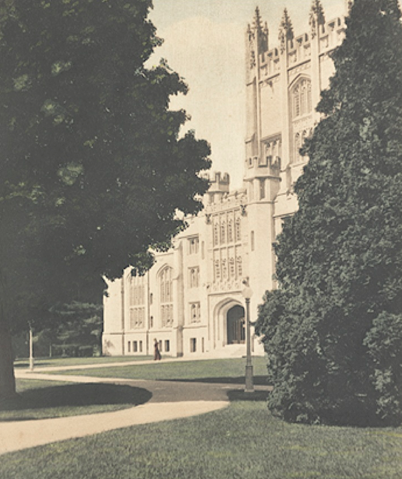Along with Vassar College, the Art Center is celebrating the sesquicentennial anniversary of our founding. In this weekly feature, we will look back on the rich 150-year history of the collection. Today’s post comes from Michael Reback and Sadie Burzan, members of the class of 2011 and Art Center student docents.

When photographer Paul Strand was just twenty-two years old, he traveled to Vassar to photograph two of our most exquisite buildings: the Chapel and the Library. After a brief stint working at an insurance company, Strand pursued photography as a full-time career. To support this pursuit, he began taking studio portraits, as well as photographs of college and university campuses which he would sell to alumni (or, as the case may be, alumnae). Our Vassar photographs by Strand are almost certainly early examples of his commercial collegiate photos. Strand took his commercial practice on the road in 1915, stopping at universities across the country and taking personal photos along the way. Photographs he took during this period would later be shown to Alfred Stieglitz and helped secure Strand a place in Stieglitz’s ‘291’ gallery — and in the history of American art.

Strand had only become interested in photography five years before the Vassar photographs. In high school, he studied photography under Lewis Hine, an advocate of the use of photography for social reform. With Hine’s class, Strand visited Stieglitz’s Little Galleries of the Photo-Secession, the predecessor to ‘291.’ Stieglitz eventually became Strand’s mentor, and he facilitated a shift from Strand’s soft and graphic photos to a more focused interest in abstraction, the city, and street portraits. Strand was interested in bettering humanity through the use of documentary photography and was one of the founders of the Photo League, an association of photographers who were interested in using art for political and social causes. Strand’s photo Blind Woman, taken only four years after his Vassar visit, is also in the Art Center collection. The photograph is an example of Strand’s attention to both formal design and as social commentary.




